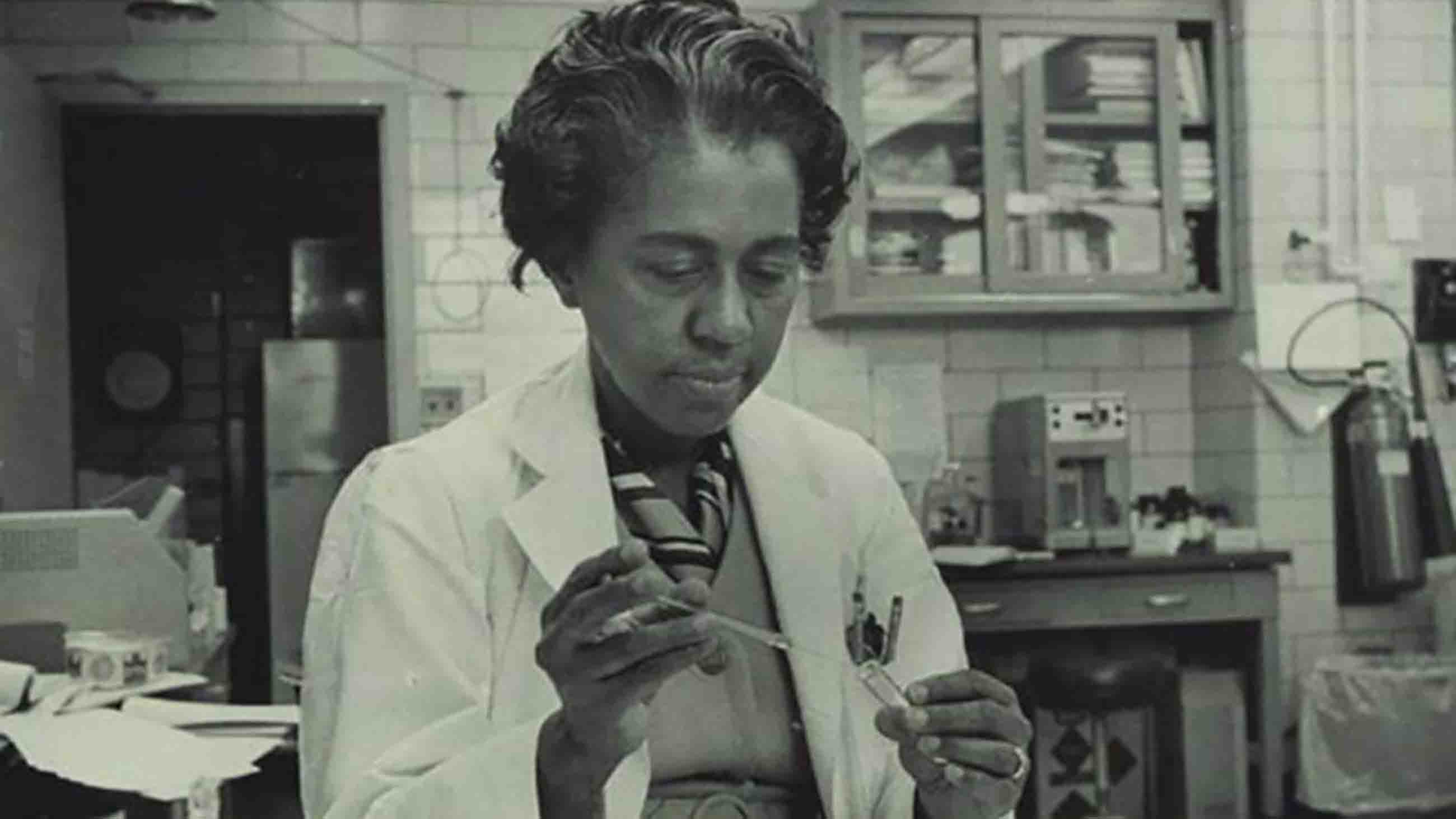Unsung: Marie Maynard Daly
In May, I was honored to serve as the kickoff speaker for Project Accelerate, a program to encourage women to pursue careers in civil engineering and construction in Southeast Michigan. With less than 9 percent of construction jobs held by women, Project Accelerate provides education and training to help meet the growing demands of construction-based jobs. In my remarks, which focused on the theme of “falling forward,” I emphasized the importance of women helping each other to navigate a successful career pathway.

I stated, in part, “Throughout my various life experiences, I’ve seen and felt the discomfort and discouragement of being urged by someone, well-meaning or not, to pursue a less technical path simply because of perceived challenges with a subject or particular topic. There are always people around to quickly coach you out of a situation instead of through a situation. They make you feel that trying something and finding that you are not good at it the first time is a reason to quit when in actuality, it is a reason to try again.” I emphasize the importance of persistence and grit, which is absolutely critical for a successful STEM career pathway. As women, we have a responsibility to help other women succeed.
During the past year, I have been given a tremendous platform to highlight and celebrate the important contributions of women and scientists of color. These Unsung heroes include Alice Augusta Ball, Dr. James LuValle, Dr. Jewel Plummer Cobb, Dr. William Claytor and Dr. Evelyn Boyd Granville. The intellectual contributions of these STEM trailblazers include developing a treatment for leprosy (Hansen’s disease), investigating potential cancer drugs, and using mathematics to nudge mankind into space. In this spirit, I finish up this series by telling the story of a remarkable Unsung STEM hero, Dr. Marie Maynard Daly, the first African American woman to earn a Ph.D. in chemistry.
Daly was born in Corona, a neighborhood in Queens, New York in April of 1921. She was the eldest child of Ivan C. Daly and Helen Page. Ivan had enrolled at Cornell University to study chemistry, but had to drop out due to the high cost of tuition. He worked as a postal worker to provide for his wife and three children.
Daly herself graduated from Hunter College High School and then enrolled at Queens College in Flushing, New York. She graduated magna cum laude with a degree in chemistry in 1942 and initially started working as a laboratory assistant at the school.
Daly decided to continue her studies and applied for graduate work at New York University, where she received a fellowship to pursue a master’s degree. After earning her master’s in 1943, she received another fellowship to pursue her doctoral degree from Columbia University, working under the direction of Dr. Mary L. Caldwell, a pioneering chemist who focused on carbohydrate chemistry. Caldwell is certainly a trailblazer in her own right. After receiving her master’s degree and Ph.D. from Columbia, she began teaching at the university as an instructor in 1922. She was promoted to full professor in 1948, and was the first woman hired as a senior faculty member in chemistry at Columbia.
Daly earned her Ph.D. in 1948, with the thesis “A Study of the Products Formed by the Action of Pancreatic Amylase on Corn Starch.” Caldwell’s research group focused on the chemistry of the enzyme amylase, which converts starch into sugars. Thus, Caldwell played a pivotal role in supporting and mentoring a woman of color to succeed in STEM. In other words, women helping other women to be successful.
After completing her doctoral studies, Daly was hired as an instructor at Howard University, a historically black college in Washington, D.C., by Dr. Herman Branson, a renowned physicist and chemist.
That same year, she was awarded a grant from the American Cancer Society and began working in the research laboratory of Dr. Alfred E. Mirsky at the Rockefeller Institute, focusing on cancer research. This was a fruitful research collaboration leading to six peer-reviewed articles published in the Journal of General Physiology and the Journal of Biological Chemistry between 1949 and 1953.
In 1955, Daly returned to Columbia University, where she worked in the research laboratory of Dr. Quentin B. Deming. Her research efforts focused on the important relationship between cholesterol and heart attacks. This type of research effort has had a tremendous societal impact due to the ongoing efforts focused on treatment for cardiovascular diseases. Daly and Deming published three peer-reviewed papers during their research collaboration in the Journal of Experimental Medicine, the Journal of Clinical Investigation, and the Journal of Laboratory and Clinical Medicine.
Over the course of her distinguished career, Daly held various prestigious positions, including working as an investigator for the American Heart Association. In 1960, she joined the faculty of the Albert Einstein College of Medicine at Yeshiva University as an assistant professor. Daly was promoted to associate professor of Biochemistry in 1971. She remained active in research focused on atherosclerosis and hypertension, publishing her efforts in the journals Circulation Research, Lipid Research, and the American Journal of Physiology.
In December 1975, Daly was one of 30 minority women scientists that attended a small conference hosted by the American Association for the Advancement of Science, specifically addressing the challenges faced by minority women in the STEM disciplines. The conference led to a final report, “The Double Bind: The Price of Being a Minority Woman in Science,” co-authored by Shirley M. Malcom, Paula Quick Hall, and Janet Welsh Brown. The chairperson of the conference was Dr. Jewel Plummer Cobb, another Unsung STEM hero. Other conference attendees included Dr. Shirley A. Jackson, a physicist and current president of Rensselaer Polytechnic Institute. “The Double Bind” is significant because the report provided important recommendations for the recruitment and retention of minority women scientists, serving as yet another example of women helping other women in STEM.
Daly is known for being the first African American woman to earn a Ph.D. in chemistry. This, however, is not why she is important. Rather, by the time she retired in 1986, Daly had made important scientific contributions to the study of cardiovascular disease, which remains a viable and important area of research today. Daly died in New York City on October 28, 2003.
Sibrina Collins is an organometallic chemist and former writer and editor for the American Association for the Advancement of Science in Washington, D.C. In July, 2016, she became the first executive director of the Marburger STEM Center at Lawrence Technological University in Southfield, Michigan.
CORRECTION: An earlier version of this piece stated that Daly received a grant from the American Cancer Institute. It’s the American Cancer Society.










